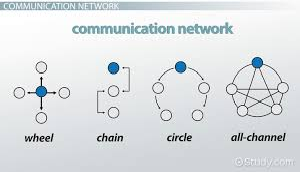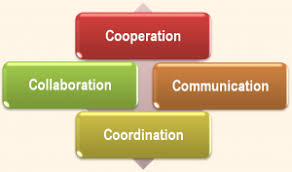
Communication in Patient Care Facilities
Order Instructions:
UNIT 2:Principles of Health and Social Care ( POWERPOINT )
SAMPLE ANSWER
Communication in Patient Care Facilities
Hospitals and social patient care facilities apply concepts of communication in their day-to-day running (Schwartz, Lowe, & Sinclair, 2010, p. 1). Without communication, it would be impossible for institutions to deliver their services or even run. Efficient art of communication is indispensable for organizational success. There are various approaches that could vary the efficiency of communication from one organization to the other. These include communication skills, systems, infrastructure, channels, regulations, and policies among others. In patient care facilities, communication particularly occurs between institutions and their clients, health professionals and patients, organizations and their staff, as well as facilities and the external environment. Inefficiency at any point during communication processes could impair running of patient care organizations. Usually, following the complexity of communication processes in institutions, challenges may present when purposing to achieve effectiveness of information delivery and use (Bramhall, 2014, p. 54). Under such circumstances, it would be necessary for institutions to find means of enhancing their communication. The approach entails focusing on various aspects constituting the process of communication. These include the previously mentioned factors such as communication skills among health care practitioners, organizational systems and so on. This essay considers the case of Gracefield Hospital and its attempts to improve its communication processes. The institution is located in one of the busiest parts of London City. It serves people of varied social backgrounds and medical needs. The hospital is about to be upgraded to a foundation, and one of the crucial factors that would see to its successful acquisition of the status is efficiency of communication in the institution.
Use of Communication in Patient Care Facilities
- Theories of Communication in Patient Care Facilities
Reputable patient care facilities have described communication as a central pillar that impacts on patient safety, quality of care, and patient satisfaction (Cleveland Clinic, 2013). As such, institutions should always purpose to have effective communication processes. However, ensuring that communication is effective is challenging for institutions. It is for this reason that facilities require pre-established models and theories for the ease of pursuing excellence in communication. Theories addressing communication matters in patient care facilities include the Theory of Planned Behavior and Health Belief Model. The Theory of Planned Behavior is an advancement of the Theory of Reasoned Action in that it adds up the concept of perceived behavioral control to its predecessor theory. The model hypothesizes that approaches that seek to cause behavioral change should target patient beliefs as they are the basis of attitudes (Niaura, 2013, p. 74). According to the model, behavior results from attitudes. The model further explains that behavior results from the intention of individuals either to perform or not to perform specific actions. In addition to attitude and perceived behavioral control, the theory also incorporates the concept of subjective norm. In patient care, health practitioners apply the Theory of Planned Behavior mostly when giving recommendations to their clients. The model enables practitioners to predict whether patients would adopt certain recommendations or not. Practitioners predict behavior by considering factors such as whether patients express positive attitudes or not. They also determine whether the subjective norm is supportive or not, and also, they evaluate the strengths of various behavioral intentions as expressed by patients. At Gracefield Hospital, clinicians apply the Theory of Planned Behavior when coming up with recommendations for their clients. By so doing, the professionals are able to offer the most applicable treatment and disease management approaches available.
On the other hand, Health Belief Model suggests that it is possible to predict patients’ behavior by evaluating the extent to which they consider themselves vulnerable (Jones, Smith, Llewellyn, 2013, p. 253). According to the model, people evaluate their vulnerability on the basis of their susceptibility to conditions as well as the severity of the consequences associated with such conditions. Usually, patient vulnerability and severity of the risks they face communicate whether patients would apply recommendations or not. By understanding such messages, practitioners would then offer effective advice to their clients (Bramhall, 2014, p. 53). At Gracefield Hospital, for instance, practitioners use Health Belief Model to offer health promotion advice to patients on the basis of their specific medical conditions. By so doing, clinicians at Gracefield Hospital utilize patient messages to enhance the effectiveness of their care.
- Communication Skills in Patient Care
Communication involves much more than just the words people say (Royal College of Nursing, 2015). For instance, the tone and voice used in communicating would send certain messages to the recipients of information. Likewise, the attention that receivers of information offer sends a message to the persons delivering information. In other words, communication is not just about words, but also skills applied in the process (Ha & Longnecker, 2010, p. 38). Usually, communications skills could be verbal or non-verbal. The verbal aspects include the tone of communication, choice of words, and voice properties such as whether commanding, requesting, or begging. Other verbal skills include the speed of speech, fluency of communication, and articulation of ideas.
On the other side, non-verbal determinants are mainly body language, and they express one’s interest in communication (Royal College of Nursing, 2015). They include body posture, facial expressions, eye contact, gestures, and touch. For instance, a smiley face of a clinician would encourage patients to approach and communicate with their health care attendants than would do a frowning face. Again, a bored look such as when one is yawning would send the implication that clinicians are not interested in attending patients. In addition, practices such as failing to maintain eye contact create an impression of lack of confidence in one-self. Patients may not be interested to communicate their problems to care providers who fail to maintain eye contact. On the other hand, it is important that clinicians avoid staring at their patients when attempting to maintain eye contact. In addition, practitioners should understand that patients of different cultures may get different messages from maintenance of eye contact. For example, some cultures may regard it as a warm encounter while others could perceive it as being rude. In the same manner, different patients may have varied interpretations of practices such as making light touches and physical contacts depending on their cultural background.
In my earlier experiences at Gracefield Hospital, I made a few communication mistakes but for now I have corrected them. I recall that I used to tower over patients when communicating to them if they were lying on bed. I later learnt that the approach was not sending the right message to patients. Upon reflection, I realized that patient felt psychologically distanced from me. As for now, I set my stature to a reasonable level when attending patients so that they can feel that I am attached to them.
- Handling Inappropriate Inter-Personal Communication in Patient Care Settings
Effective interpersonal communication is vital in patient care institutions (Ha & Longnecker, 2010, p. 38). As noted earlier, communication in these settings involve multiple parties including patients, clinicians, facility administrators, external parties such drug and equipment suppliers among others. For instance, nurses would require interacting with physicians, pharmacists, therapists, psychologists, dieticians and other relevant clinical personnel for them to understand the specific needs of patients. As such, it would be vital to have a system that promotes such interactions. Patient-centered communication is particularly critical and when it is inappropriate, it would directly impair the process of meeting primary goals of patient care institutions. When communication between patients and health care professionals is effective, patients achieve satisfaction, they tend to comply with treatment approaches, and eventually, they realize their desired outcomes (Negri, Brown, Hernandez, Rosenbaum, & Roter, 2010, p. 7). At times, interpersonal communication is impaired by certain factors within patient care setups. Such factors include language barrier, cultural differences, specific needs, and education disparities. Determinants also include ones associated with organizations, practitioners, and patients. So as to handle inappropriate interpersonal interactions, organizations should address the specific challenges impairing communication. For instance, relevant stakeholders would equip their facilities with modern communication devices to facilitate communication among healthcare professionals. Such infrastructure should also facilitate access of patient information so that practitioners can interact effectively with their clients. On the same basis, institutions should facilitate their interactions with patients by employing technological communication systems in patient follow-ups. For instance, institutions could have working call, messaging, and mailing services to encourage patients to keep in touch with their health care providers. Another effective approach applicable to handling inappropriate inter-personal communication include encouraging health care providers to employ effective communication skills. The strategy would include enhancing the skills of practitioners through training, capacity building, and internal campaigns. Adoption of communication policies would also effectively manage inappropriate interpersonal communication. At Gracefield Hospital for instance, communication policies define methods through which health care practitioners are expected to interact with their clients. These policies guide professionals in extending standardized and high-quality care to patients that is devoid of communication insufficiencies.
- Caring for Patients with Specific Communication Needs
In health care, patients may present varied communication needs (Kourkouta & Papathanasiou, 2014, p. 65). In most cases, people with physical, mental, and sociocultural disabilities would necessitate specified strategies to address their specific needs. The deaf and the blind are particularly special groups whose communication needs would require extra skills and modification of systems to settle. For example, so as to cater for the needs of the deaf, patient care facilities should consider employing sign language specialists. Such a move would facilitate communication and overcome challenges such as having to waste too much time seeking external help. So as to facilitate interactions with crippled persons who may need to communicate regularly with health care personnel, organization should adopt practices such as encouraging the use technological communication strategies such as video calls to overcome the inconveniences associated with travelling to hospitals. On the other hand, institutions should hire professionals who can use brails to cater for blind people. Other approaches include addressing the communication needs of illiterate patients. For such patients, health care practitioners should consider beefing up written messages with images. Additionally, practitioners should consider giving practical illustrations instead of just directing patients verbally or through written instructions. Another special group that patient care facilities should attend with extra attention constitutes people who are affected by language barrier. Language disparities are likely to impair communication in patient care as professionals may not get the messages of their clients. Likewise, patients may fail to understand their health care providers if they do not understand their language. So as to address the needs of the group, institutions should employ professional translators. Alternatively, institutions should consult families of their patients to connect with their clients. However, the approach may be associated with too many inconveniences and it may be unreliable. For organizations that deal with people of different geographical regions, hiring professional translators would offer one of the most effective approaches to handling challenges of language barriers. For instance, Gracefield Hospital has established the sources of its customers, and it has employed professional translators for languages such as Russian, Spanish, German, and Indian. The personnel work with the communication and customer support department. The personnel facilitate attendance of patients by giving accurate and timely translations to health care professionals.
Influence of Different Factors on Communication Processes in Patient Care Facilities
2.1 Values and Culture
Values and culture are important determinants of communication strategies during patient care. Though the culture of health care professionals also count in influencing communication, the culture of patients poses most of the observed challenges. Clinicians and social health care professionals should understand the cultural values adopted by their clients so as to avoid possible inefficiencies in communication. Usually, culture instills in people certain values and beliefs that could either promote or hinder communication (Kalliny, Ghanem, & Kalliny, 2014, p. 145). For instance, people of different cultures may hold varied perceptions on communication strategies such as disclosure of personal information. For instance, people could hold beliefs such as those restricting them from counting their parities. Some cultures would consider such practices as a taboo, and therefore, patients with such backgrounds would hesitate to disclose the information to health care professionals. Another excellent illustration of the influence of culture and values on communication during patient care is the instance of cultures discouraging men from disclosing their problems to women. For such cultures, male patients may offer limited information to female healthcare professionals.
Usually, clinical and social care professionals are expected to offer culturally-sensitive services. As such, it would be out of order for them to deny patients preferences motivated by culture. Rather than challenging cultural beliefs and values held by their patients, health care providers should seek alternative means of attending patients. It is also advisable to note that though some cultural values could be disgusting and unreasonable from the perspectives of health care professionals, practitioners should not express their frustration to patients. Instead, they should handle such situations in a friendly manner.
Gracefield Hospital is a culturally-sensitive institution. It encourages practitioners to adhere to cultural ethics described in their respective codes of practice. The institution also enlightens its customers by addressing mythical beliefs about communication that could be generated in the society and cultural setups. The institution exposes unfounded beliefs to encourage patients to communicate more effectively with their clinicians. However, Gracefield Hospital does not deny patients the right of holding cultural and personal beliefs by any means. Personally, as an advocate of effective communication at Gracefield Hospital, I would give scientific evidence to patients for them to reconsider beliefs that impair care delivery.
2.2 Impact of Legislation, Charters, and Codes on Communication in Patient Care Setups
Communication is a critical aspect in patient care. It entails requesting information, handling it, reacting to it, sharing it, and managing it. If not properly conducted, communication may impair service delivery, patient satisfaction, as well as patient safety. For such reasons, stakeholders have developed regulations and guidelines directing various practices involved in communication. The regulations range from legislative laws, charters, policies, codes of practice, as wells ethical guidelines. The application of these regulations discourages malpractices that could result with inappropriate means of carrying out various processes of communication. Some of the communication approaches considered worldwide is patient information on drugs. Laws and regulations protect patients from misguidance that could be motivated by financial interests of clinicians and social health care professionals. While the law encourages health care professionals to keep their clients updated on available therapeutic strategies, it discourages them from having vested personal or business interests when recommending management practices. Regulations also define interactions that hospitals should have with pharmaceutical companies (Francer, Izquierdo, Music, Narsai, Nikidis, Simmonds, & Woods, 2014). Such laws define concepts such as product promotion, non-promotion, and scientific knowledge and describe how such factors should be handled in communication between pharmaceutical companies and healthcare professionals or the community. Other regulatory communication laws include the ones that define knowledge delivery to patients and subsequent requests for treatment consent. Usually, ethical guidelines of patient care practice involve autonomy, beneficence and non-maleficence, as well as justice (Selinger, 2009, p. 50). So as to grant autonomy to patients as directed through ethical guidelines patient care professionals require promoting patient awareness by communicating necessary information to their clients. After doing so, then professionals may request their clients to give them consents to take care of their needs. In the UK, professionals who may treat their patients without consent, or those who would use wrong information to acquire patient consent face severe legal consequences, and they are charged with battery (Selinger, 2009, p. 51). Other crucial legal frameworks governing communication in patient care institutions include the Disease Control Act established in 1984. The Act requires healthcare professionals to notify the public about infectious diseases and offer mandatory treatment for illnesses such as tuberculosis. There are also legal frameworks requiring health care professionals to promote patient confidentiality in their practice. For instance, practitioners are required to professionally evaluate the necessity to disclose patient information to other parties such as the police before acting. Other frameworks that influence patient communication with healthcare professionals include advanced care directives. Usually, practitioners are required to refer to such directives, more so if their patients are unconscious at the time of treatment. Gracefield Hospital has achieved its current position by avoiding communication malpractices that by adhering to professional laws as well as the British Constitution.
2.3 Organizational Policies and Appropriate Practice of Communication
Organizations shape the communication conduct of their staff through policies and systems. For instance, institutions could impose fines to their own staff that compromise patient privacy by inappropriately disclosing patients’ personal information. Again, institutions could influence various practices in communication such as the application of specific communication skills when attending patients. For instance, institutions would require their practitioners to always welcome their clients with a warm handshake or verbal salutation. On the other hand, organizations could structure and implement policies that would discourage practices such as distracting patient interviews. For example, institutions may require practitioners not to put their personal phones in silent mode when interviewing or educating patients. By so doing, organizations would set up a culture that impact on communication significantly. It is also possible for organizations to influence communication conduct by focusing on personal appearance and dressing code of practitioners. Usually, patients get certain messages by evaluating the general appearance of their health care providers (Ha & Longnecker, 2010, p. 40). In addition, patient care facilities would influence communication to patients and among professionals by adopting certain channels such as ICT devices. For instance, institutions could set up mailing, messaging, and calling facilities that would be facilitating the interaction of patients with their clinicians. Again, the mechanisms of staff supervision that patient care facilities adopt would impact significantly in shaping appropriate communication conduct. For example, if institutions are keen to patient responses about the conduct of practitioners, then the staff would most likely adopt good communication strategies to impress their clients so as to earn a reputable image by the management.
Gracefield Hospital is keen on setting up systems that promote appropriate communication conduct. The hospital has a working system where patients’ compliments and complains are discussed. Staff members are encouraged to handle their clients wisely and those who receive overwhelming complements from patients are rewarded. As such, staff members feel obliged to offer services that meet or surpass communication standards of the facility.
2.4 Improving Communication Processes in Patient Care Facilities
Social and health care institutions can enhance their communication systems through numerous approaches. For instance, organizations can better the efficiency, reliability, and speed of communication by adopting technologically advanced instruments (Robertson, Creswell, Takian, Petrakaki, Crowe, Cornford, & Sheik, 2010, p. 4564). An excellent illustration of technological systems that patient care facilities can utilize is the electronic health records (EHR). The systems would improve interactions between clinicians in different disciplines such as nursing, medicine, and pharmacy. Additionally, adopting EHR systems would provide practitioners with an opportunity to easily access patient information and make safe decisions. The other approach that could lead to improved communication processes is staff training and capacity building. This would entail advising practitioners on appropriate ways of handling patient information, updating them on patient care communication policies, and advising them on the best practices of handling controversial situations. Institutions should also focus on special groups when purposing to improve their communication systems. For instance, they can hire translators to facilitate communication with patients who present with language barriers. For the blind, institutions can higher sign language specialists, and for the blind, patient care organizations should hire professionals who can utilize brail services. Other approaches to improving communication with patients include educating patients. Such approaches would include addressing cultural beliefs that patients hold concerning the disclosure of their personal information under certain circumstances. Institutions should also educate patients on beliefs founded on myths. By so doing, there would be a reduction in situations of cultural hindrances to communication.
Gracefield Hospital has already focused on improving its communication processes. The organization has instituted a committee that has been mandated to investigate communication challenges in the facility and offer recommendations for bettering the system. The process of improving communication in the institution is currently underway and the committee includes professionals from relevant medical fields.
Information Communication and Technology in Patient Care
3.1 Accessing and Using ICT in Patient Care
ICT tools are designed to facilitate communication in patient care and hence impact positively on service delivery and eventual treatment outcomes. ICT-enabled records facilitate access of information by different health professionals at different levels of treatment (NHS Choices, 2015). For this case, EHR systems offer an excellent illustration to accessing and using ICT in patient care. Basically, EHR systems are electronic versions of the previously used traditional paper medical records (Advanced Data Systems Corporation, 2012). They are cloud-based, and therefore, the entered information is secure and only accessible to certain users, who for this case are healthcare professionals. The system is internet-based and one requires devices such as a computer, smart phone, tablet, or laptop to access it. Usually, health care professionals are issued with login information including a password for them to access the system through EHR website. Once they have logged in to the system, users get access to patient information including medical history, personal data, and financial information and so on. Health care professionals using EHR systems also get access to crucial medical information such as laboratory test results and findings of physical diagnoses (The British Psychological Society, 2011, p. 4). In addition to viewing information, users of EHR systems can also modify patient information by adding data.
Gracefield Hospital has adopted EHR Systems and replaced paper-based medical records. The systems are particularly important in that they enable physicians to make referrals with efficiency. Again, doctors at the hospital use the system to communicate with one another and discuss patient matters. The systems have also been of great use in expanding the knowledge of health care professionals in the hospital. For instance, users of the system stay updated on matters such as those concerning disease outbreaks. Professionals at Gracefield Hospital also find the systems handy in getting scientifically-proved information concerning diseases and their treatment.
3.2 Benefits of ICT in Patient Care for Patients, Practitioners, and Organizations
There has been wide use of ICT in patient care institutions worldwide (Robertson et al., 2010, p. 4564). ICT has remarkably influenced service delivery in patient care institutions. One of its greatest impacts is speeding communication (The British Psychological Society, 2011, p. 5). Unlike in earlier times where there were no major technological developments, it is possible to communicate fast with the help of ICT. For instance, patients used to deliver their records physically to different health care providers when clarification of issues was necessary. Nowadays, health care providers contact each other on phones, computers, and other gadgets through calls, messages, and mails whenever needs of clarification arise. ICT has also promoted patient safety. For instance, systems such as EHR minimize chances of error as they present information in a standardized way. Again, patients are protected in that they cannot lose their medical history as would have been the case had they depended on paper records solely. They are also protected in that their medical and personal information is only accessible to authorized persons. To patient care organizations, ICT has significantly facilitated management. Usually, one of the greatest worries of organizations is managing and using data. When organizations use computers and online systems to store data, it becomes easier for them to handle such data. They can retrieve it when necessary and also make modifications as needs to do so arise. On their side, health and social care practitioners enjoy benefits such as attending patients accurately. Professionals are able to make accurate decisions as they have sufficient patient information at their disposal, and they can access it timely. At Gracefield Hospital, ICT has mostly contributed to the institutions current position. Technological tools have facilitated care delivery and the overall efficiency of running the facility.
3.3 Impact of Legal Factors on Communication Systems in Patient Care
ICT has both benefits and shortcomings, especially depending on the means of its application to service. For instance, while technological systems facilitate data storage and retrieval, they could easily compromise its security. In abnormal circumstances, people entrusted with keeping information may expose it to unauthorized parties. For such situations, the impact of ICT would be detrimental to the privacy of the owners of information. Bearing such considerations, governments institute legal measures concerning the use of technology. Such legislations have significant impact on the application of ICT in patient care settings. In England, one of the most influential policies is the Data Protection Act instituted in 1998. The Act controls the manner in which institutions use information that they collect from people (Gov.UK, 2015). In patient care institutions, The Data Protection Act requires that facilities only use information from their clients for treatment purposes only. Again, the act requires that such data be applied accurately and precisely to its stated purpose. Additionally, the Act limits the transfer of patient data by requiring that data be accorded adequate protection if it is to be communicated beyond the European Economic Area. The act also influences data handling by requiring patient care institutions to apply extra caution and security on sensitive information such as sexual health, ethnic background, and criminal records. At Gracefield Hospital, the Act encourages practitioners to handle patient information appropriately. Actually, the Act offers patient an opportunity to sue the organization in situations where they would feel dissatisfied with the institutions use of information that it collects from them.
References
Advanced Data Systems Corporation. (2012). How do EHR systems work? Retrieved from http://healthcare.adsc.com/blog/bid/195876/How-Do-EHR-Systems-Work
Bramhall, E. (2014). Effective communication skills in nursing practice. Nursing Standard, 29(14), 53-59.
Cleveland Clinic. (2013). Why relationship centered communication matters. Retrieved from http://healthcarecommunication.info/
Francer, J., Izquierdo, J. Z., Music, T., Narsai, K., Nikidis, C., Simmonds, H., & Woods, P. (2014). Ethical pharmaceutical promotion and communications worldwide: codes and regulations. Philosophy, Ethics, and Humanities in Medicine : PEHM, 9, 7. http://doi.org/10.1186/1747-5341-9-7
Gov.UK. (2015). Data protection. Retrieved from https://www.gov.uk/data-protection/the-data-protection-act
Ha, J. F., & Longnecker, N. (2010). Doctor-patient communication: A Review. The Ochsner Journal, 10(1), 38–43.
Jones, C., Smith, H., Llewellyn, C. (2013). Evaluating the effectiveness of health belief model in improving adherence: a systematic review. Health Psychology Review, 8(3), 253-269.
Kalliny, M., Ghanem, S., & Kalliny, M. (2014). The Influence of cultural orientation and communication style on consumer behavior. Journal of Global Marketing, 27(3), 145-160.
Kourkouta, L., & Papathanasiou, I. V. (2014). Communication in nursing practice. Materia Socio-Medica, 26(1), 65–67.
Negri, B., Brown, L., Hernandez, O., Rosebaum, J., & Roter, D. (2010). Improving inter-personal communication between health care providers and clients. Retrieved from http://pdf.usaid.gov/pdf_docs/Pnace294.pdf
NHS Choices. (2015). Your health and care records. Retrieved from http://www.nhs.uk/NHSEngland/thenhs/records/healthrecords/Pages/overview.aspx
Niaura, A. (2013). Using the theory of planned behavior to investigate the determinants of environmental behavior among youths. Department of Environmental Sciences, 1(63), 74-81.
Robertson, A., Creswell, K., Takian, A., Petrakaki, D., Crowe, S., Cornford, T., . . . Sheik, A. (2010). Implementation and adoption of nationwide electronic health records in secondary care in England: qualitative analysis of interim results from a prospective national evaluation. BMJ, 2010(341), 4564.
Royal College of Nursing. (2015). Communication methods. Retrieved from http://rcnhca.org.uk/top-page-001/communication-methods/
Schwartz, F., Lowe, M., & Sinclair, L. (2010). Communication in health care: considerations and strategies for successful consumer and team dialogue. Hypothesis Journal, 8(1), 1-10.
Selinger, C. P. (2009). The right to consent: is it absolute? British Journal of Medical Practitioners, 2(2), 50-54.
The British Psychological Society. (2011). Guidelines on the use of electronic health records. Retrieved from http://www.bps.org.uk/sites/default/files/documents/electronic_health_records_final.pdf
We can write this or a similar paper for you! Simply fill the order form!












